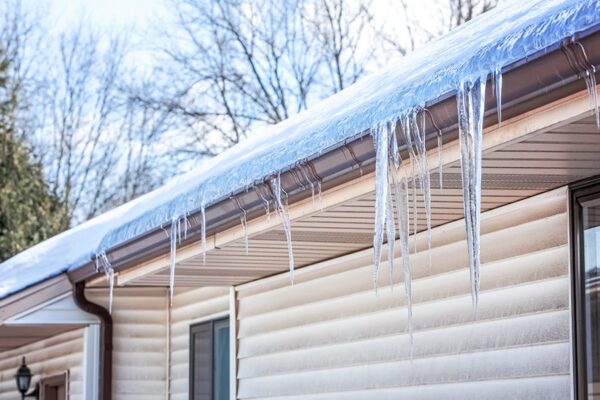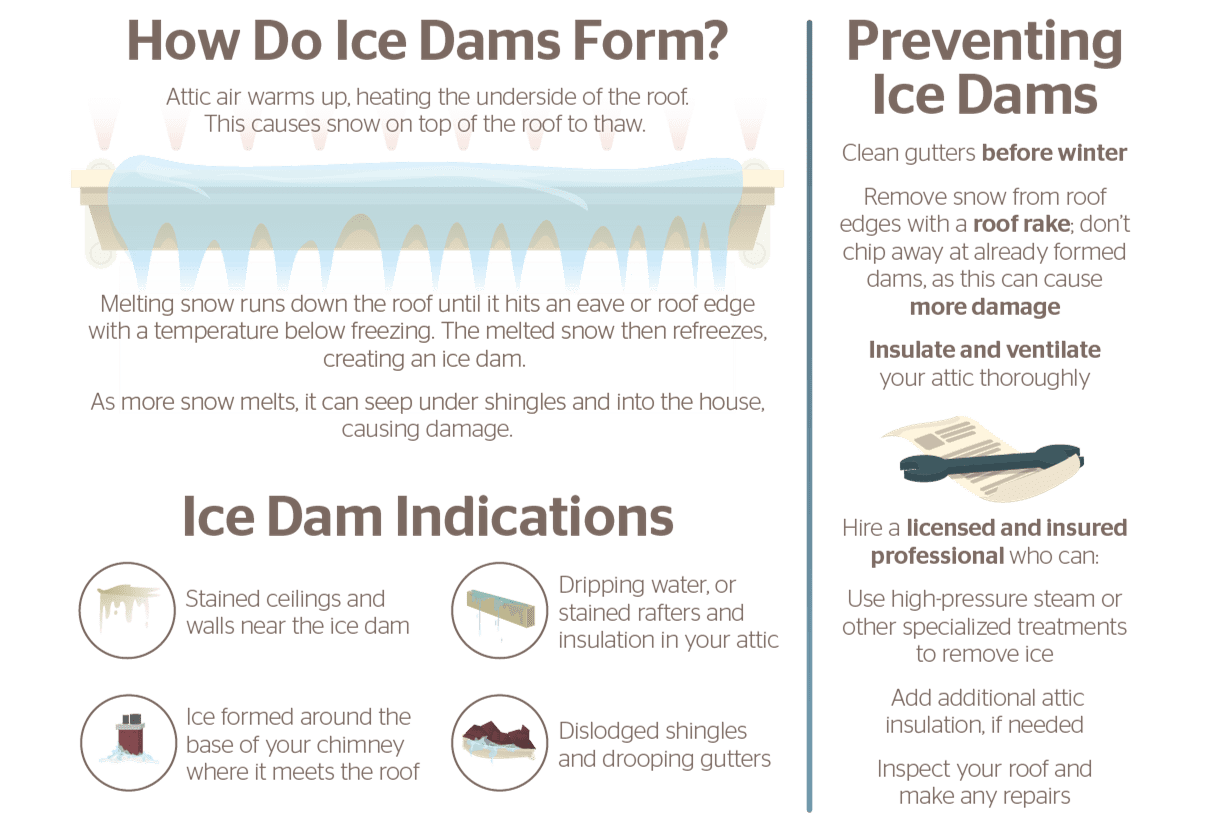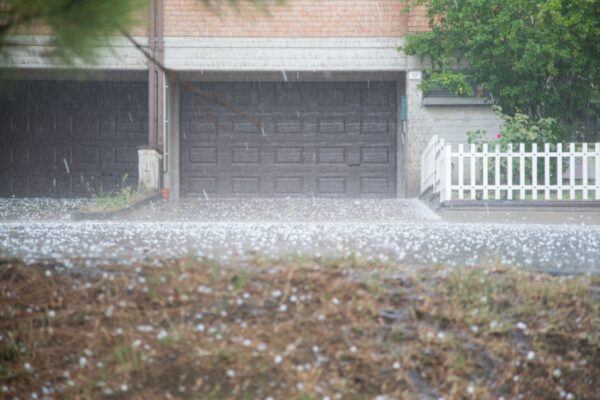Winter landscapes may seem peaceful and picturesque – however, water/ice damage makes up 20 percent of all homeowner insurance claims. Some of the most common claims in the Midwest are related to ice dams, especially in late winter when the days start to warm up, but the nights remain cold.
We’ve laid out some additional information on what ice dams are, how to prevent them and how to ensure you’re covered accordingly if they damage your home.
What are Ice Dams?
During the cold winter months, the icicles on a house’s eaves may signify that a ridge of ice is forming at the edge of the roof. This ridge is known as an ice dam, and it can prevent melting snow from draining properly.
Ice damming is caused by the accumulation of snow on a home’s roof and gutters that go through numerous freeze/thaw cycles. Melting ice water will enter the structure, eventually coming into the interior, generally on the inside of walls. Sometimes, this results from uneven heat loss from a home in wintry conditions. This causes the roof to warm above freezing temperature, allowing snow to melt and then re-freeze before reaching the roof’s edge. If this cycle repeats consistently, an ice dam will form, and water will collect behind it. As the water pools, it accumulates and can lead to expensive water damage, seeping under shingles and into the house.
Ice Dam Indications
- Stained ceilings and walls near the ice dam
- Dripping water or stained rafters and insulation in your attic
- Ice formed around the base of your chimney where it meets your roof
- Dislodged shingles and drooping gutters
Will Homeowners’ Insurance Cover Damage from Ice Dams?
The short answer is “yes.” Quality policies that are offered by The Horton Group do cover damage caused by ice damming. However, whenever possible, avoiding a homeowner’s claim is always your best bet. Why pay a deductible and potential surcharge, not to mention going through the inconvenience, when it can be avoided?
How Can I Prevent Ice Dams?
Here are some helpful tips to stop ice dams from forming on your home:
- Clean leaves and other debris from gutters: This will help avoid ice build-up in your gutters – especially if you complete this before the first snowfall and after the leaves have fallen. Clogged gutters allow water to accumulate, which eventually freezes. Of course, if the water from thawing snow and ice can’t go down, it goes up and into the structure.
- Use a roof rake to clear the snow above the gutter: Clear as much as three to four feet above the gutter to allow water to drain freely into the gutter. This way, once the ice melts, water will have a means of egress from the roof, eliminating the risk of standing water and major damage.
- Ensure your attic is properly insulated: Warm air in the attic can condensate on your roof’s interior and melt snow on the surface of the roof’s exterior. This water will eventually end up penetrating the walls of the home. If this is left unchecked, this moisture can become a mold concern once the weather warms. Your attic should not be much warmer than the outside winter temperatures. You should have between 16 and 22 inches of insulation to minimize the amount of heat rising into the attic from below.
- Keep the attic well-ventilated: According to the Department of Energy, one square foot of free ventilation opening is recommended for every 150 square feet of attic space.
- Seal all air leaks: This will prevent warm air leakage from plumbing vents, junction boxes from ceiling fixtures and attic hatches.
- Maintain your roof throughout the year: Proper maintenance is crucial when it comes to preventing ice dams. Specifically, you should ensure that any roof drainage systems, such as scuppers, gutters, and downspouts, are free of debris and working properly. Be sure to also cut back overhanging trees or vegetation, as falling debris can clog your drainage systems.
- Assess your roof: It is important to get your roof professionally inspected regularly and detect and fix potential problem areas (particularly after a storm). You should also assess your roof’s slope – if constructed properly, a sloped roof can shed heavy snow, ice, or melting water. In general, the gentler the slope, the more at risk you are for a roof collapse.
Need Extra Assistance Protecting Your Home?
Set up a consultation with one of Horton’s personal insurance experts to reduce your stress and save money by preparing accordingly. We hope these tips protect your house from the rough winters ahead.
Material posted on this website is for informational purposes only and does not constitute a legal opinion or medical advice. Contact your legal representative or medical professional for information specific to your legal or medical needs.




